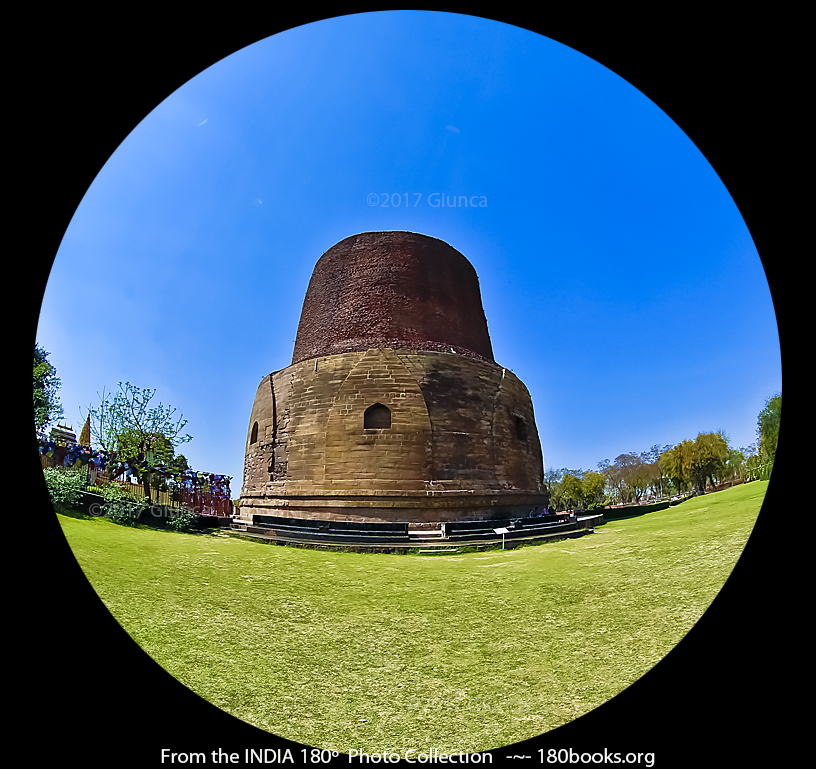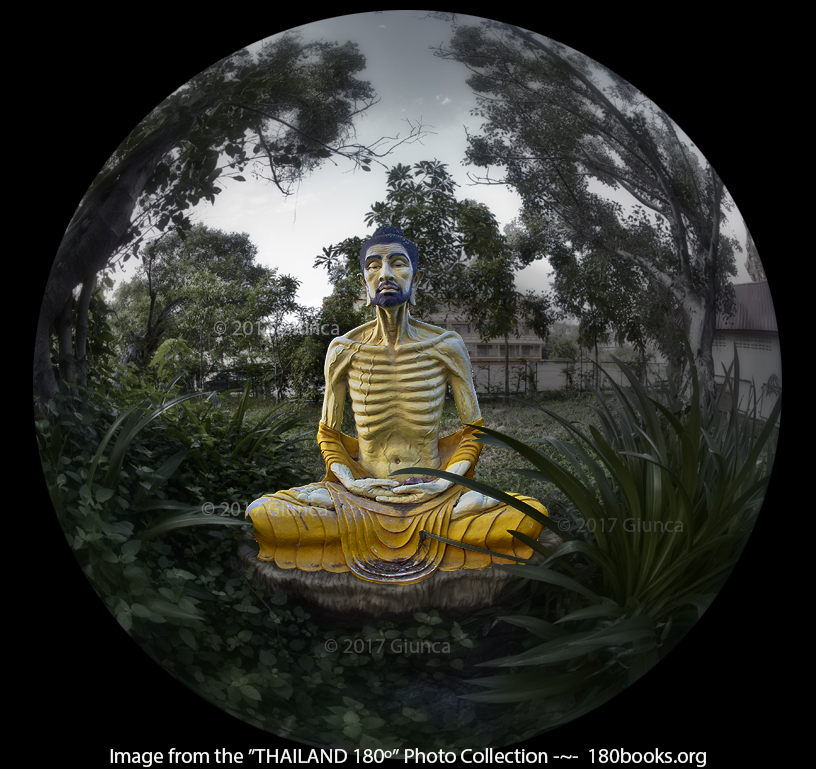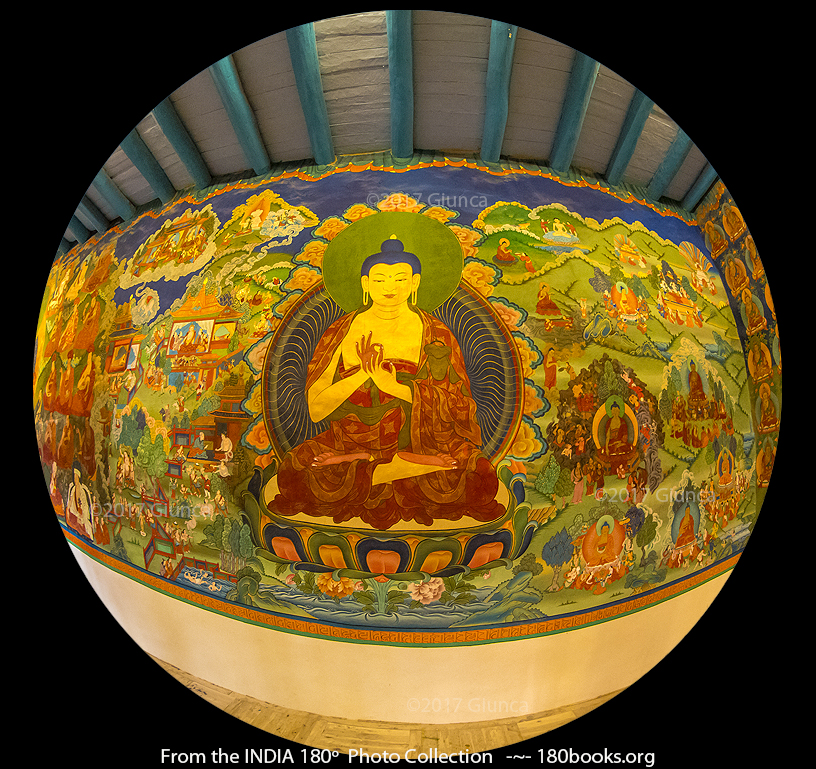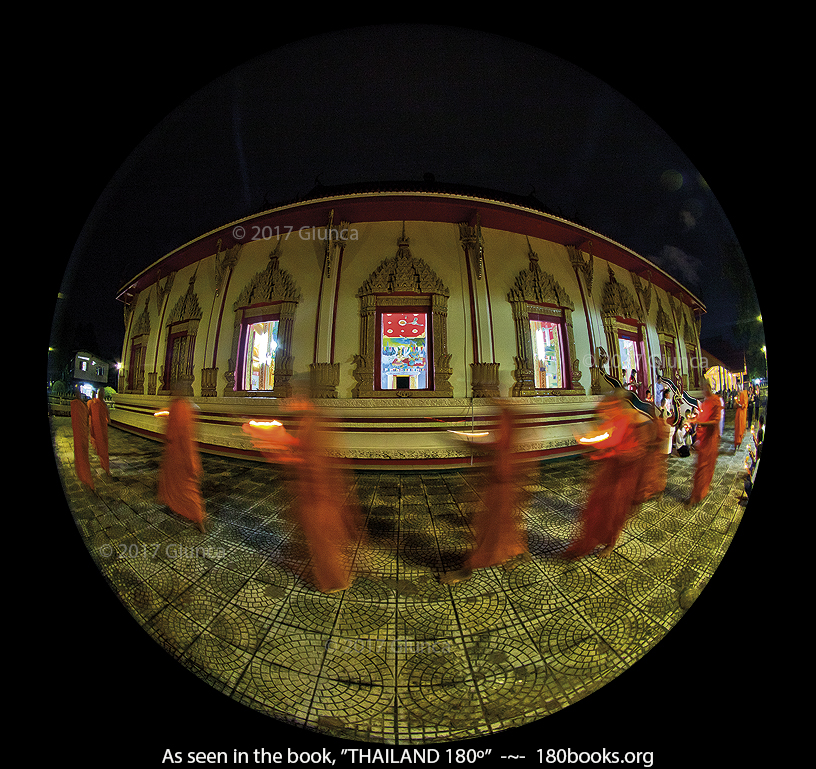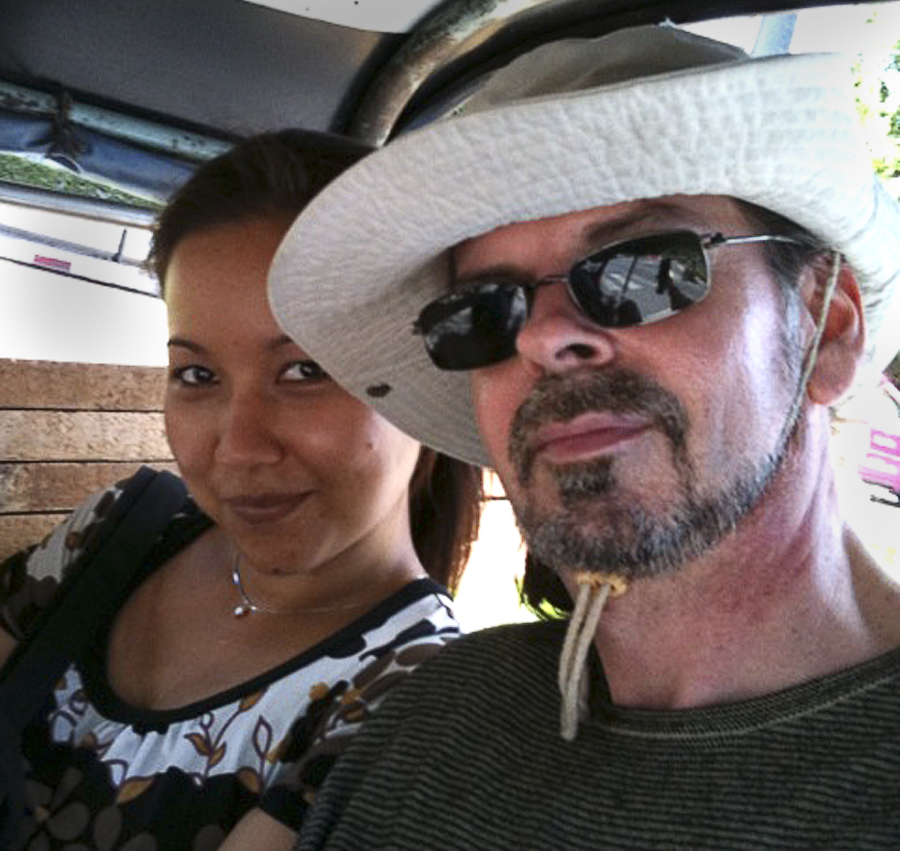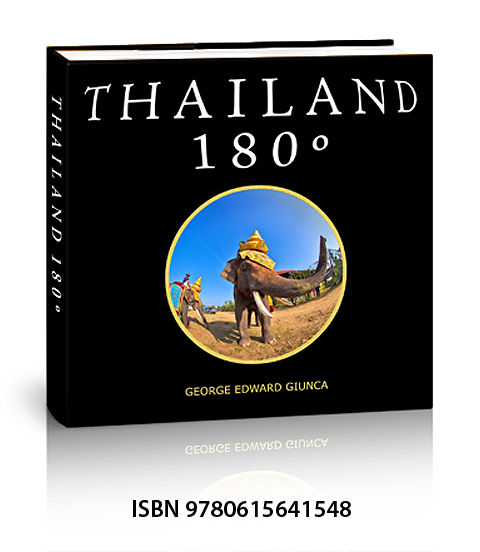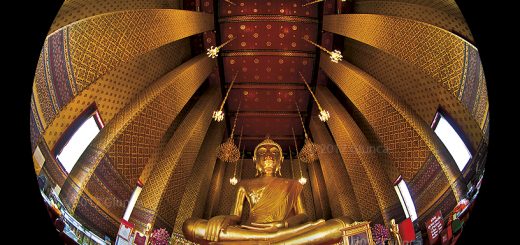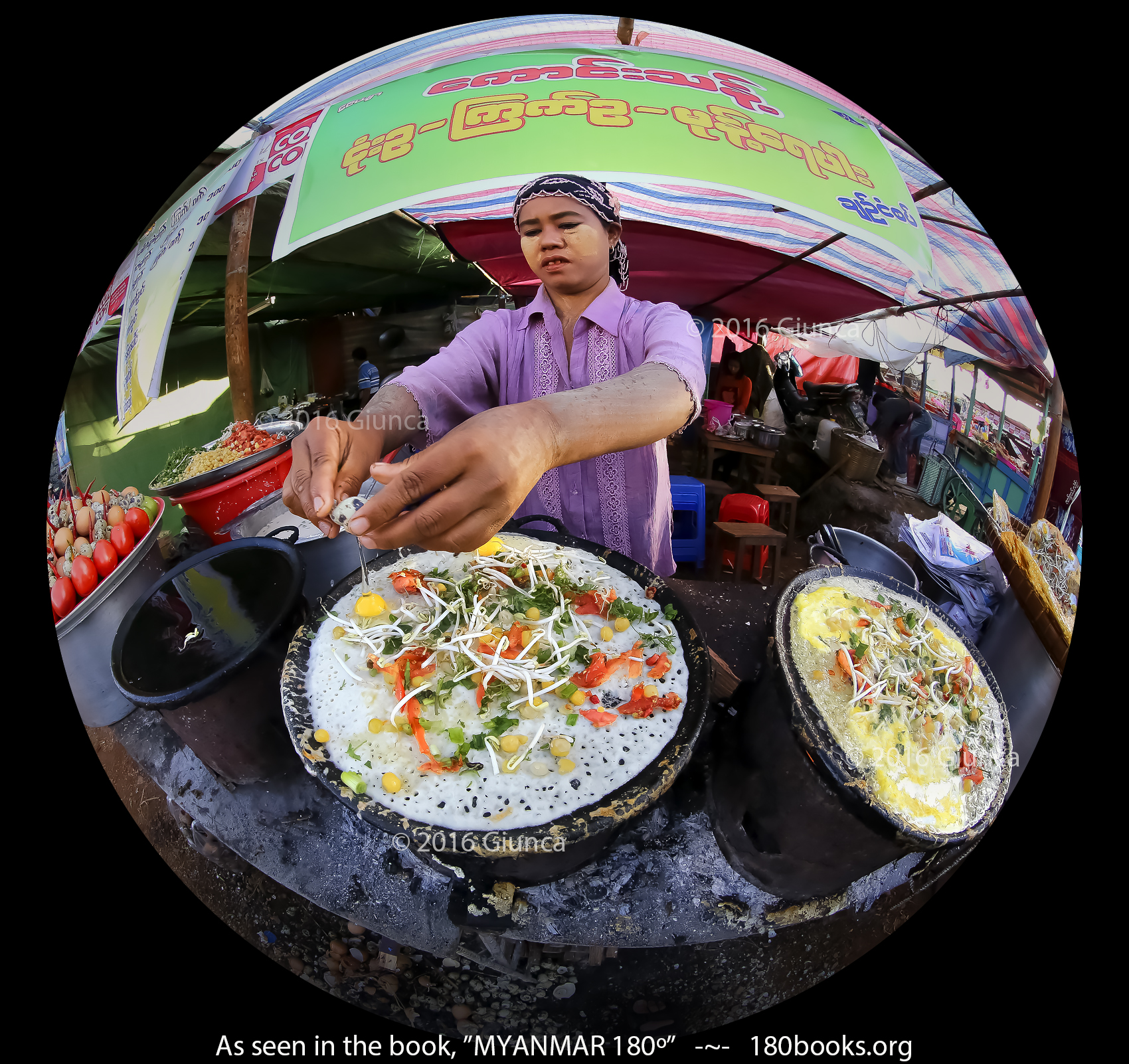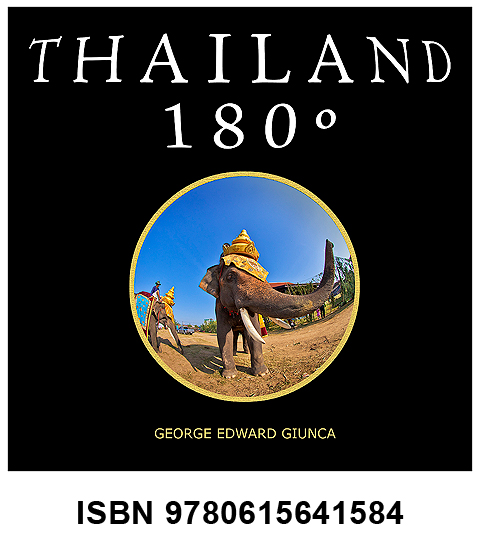Asalha Puja Day (Dharma Day) ~ วันอาสาฬหบูชา
Asalha Bucha, also known as Dhamma Day in India, is celebrated on the full moon of the 8th lunar month, which usually falls in July on the Western calendar. This day is observed to honor Buddha’s first sermon at Sarnath near Varanasi after he obtained Enlightenment.
… อ้าว! อย่าเพิ่งปิด อย่าเพิ่งหลับ บล็อกไม่ยาวค่ะ เพราะขี้เกียจเขียน ~เอ้ย~ ไม่ใช่.. อยากเขียนและเล่าอะไรที่ใหม่กว่าความรู้เดิมตามตำราต่างหากล่ะ
แน่นอนว่า วันนี้ต้องเป็นวันพระ ตรงกับวันขึ้น 15 ค่ำ เดือน 8 — แต่ก็มีอีกชื่อหนึ่งที่อินเดียเขาเรียกวันอาสาฬหบูชา ว่า “Dhamma Day” หรือ “วันพระธรรม” คือ เป็นวันที่พระพุทธเจ้าทรงแสดงพระธรรมเทศนาเป็นครั้งแรกหลังจากตรัสรู้นั่นเอง
Dhamek Stupa at Sarnath, Varanasi ~ ธรรมเมกขสถูป เมืองพาราณสี
After the Buddha had obtained enlightenment, he wanted to pass on his newfound knowledge. He wondered who he should teach. First, he thought of his teachers, but they had already died. Then he thought about the five companions who had been with him during the time he was trying to solve the mysteries of life, birth, and death. He traveled to Sarnath, a town near Varanasi, India, where he had last seen them. Upon finding them, he gave what would be known as his first sermon, which is called the Dhammacakkappavattana Sutta. One of the men, Kondanna, understood his teaching so well that he too became enlightened. The five men, along with the Buddha, established the Sangha, or monkhood so that others could receive his teachings and end their Earthly sufferings. Archaeologists believe that the giant Dhameka Stupa currently marking this spot was built on top of an earlier marker by King Ashoka.
พระพุทธองค์ทรงตั้งพระทัยที่จะสอนแก่มนุษย์ทั้งหลายถึงสิ่งที่พระองค์ตรัสรู้ …แล้วจะสอนใครก่อนดีล่ะ??? — พระอาจารย์ของพระองค์ก็มรณภาพไปจนสิ้นแล้ว พระพุทธเจ้าจึงทรงระลึกถึงปัญจวัคคีย์ที่พำนักอยู่ ณ ป่าอิสิปตนมฤคทายวัน เมืองพาราณสี แต่ชื่ออินเดียเรียกว่า “Varanasi” หรือ “Benares”
พระพุทธเจ้าทรงแสดง “ธัมมจักกัปปวัตตนสูตร” อันเป็นปฐมเทศนา ท่านโกณฑัญญะได้บรรลุโสดาบัน และบรรพชาอุปสมบทเป็นพระสงฆ์อริยสาวกองค์แรก วันนี้จึงเป็นวันที่พระรัตนตรัยครบบริบูรณ์ ทั้งพระพุทธ พระธรรม และพระสงฆ์
ธรรมเมกขสถูป องค์ที่เห็นในภาพนี้สร้างขึ้นสมัยหลังพุทธกาล ซึ่งนักโบราณคดีเชื่อว่าพระเจ้าอโศกมหาราชได้เสด็จมาที่สารนาถและสร้างธรรมเมกขสถูปองค์นี้แทนที่สถูปองค์เดิมซึ่งไม่ปรากฏหลักฐานแน่ชัดว่าองค์เดิมสร้างเมื่อใด เพื่อระลึกถึงจุดที่พระพุทธองค์ทรงแสดงปฐมเทศนาโปรดปัญจวัคคีย์ รวมทั้งเป็นสถานที่บังเกิดพระสงฆ์องค์แรกในพระพุทธศาสนา
Dhammacakkappavattana Sutta
Obviously, I’m not the Buddha, and it’s beyond the scope of this blog to impart enlightenment on you. Still, I’d like to touch on the highlights of his teachings, as I understand them, and suggest that if it rings true for you, perhaps you should find a Buddhist Temple and learn more. Maybe you could even travel to Thailand and spend part of your vacation time living at a Thai temple. There are many temples throughout the country that cater to Westerners and the study programs run from a few days to a lifetime, depending on your level of interest and needs. Many are free.
The Buddha began the sermon to his five former companions by cautioning them that following extreme paths to knowledge either through sensual pleasures or self-mortification and torture to the body as they had practiced before, would not lead to true spiritual development.
He instead told them to follow a “Middle Way” and taught them these Four Noble Truths:
1. Dukkha —– Life on Earth is full of suffering
2. Samudaya —– Desire is the root of all suffering
3. Nirodha —– Extinguishing desire will end suffering
4. Maggie —– Following the “Eightfold Path“ will extinguish desire and lead to nirvana, a higher plane of existence where there is no suffering.
“By understanding the four truths, one can stop this clinging and craving, attain a pacified mind, and be freed from the endless cycle of rebirth or Samsara. This can be accomplished by following the eightfold path, restraining oneself, cultivating discipline, and practicing mindfulness and meditation.”
The “Eightfold Path“
I’m going to quote from the excellent http://www.buddhanet.net/e-learning website here since they have done such a beautiful job of explaining it:
The Noble Eightfold Path has eight parts or factors:
1. Right understanding means to know and understand the Four Noble Truths.
2. Right attitude means to have three kinds of thoughts or attitudes:
(i) Thoughts of renunciation or an attitude of “letting go”.
(ii) Thoughts of goodwill to others, which are opposed to ill will.
(iii) Thoughts of harmlessness, as opposed to cruelty.
3. Right speech deals with refraining from falsehood, such as telling lies or not telling the truth; tale-bearing or saying bad things about other people; harsh words and frivolous talk such as gossiping.
4. Right action deals with refraining from killing, stealing and sexual misconduct.
5. Right livelihood deals with the five kinds of trade which should be avoided in order to lead a noble life. They are: trading in arms (weapons), living beings (breeding animals for slaughter), intoxicating drinks and poison.
6. Right effort has four parts using meditation:
(i) To try to stop unwholesome thoughts that have arisen
(ii) To prevent unwholesome thoughts from arising.
(iii) To try to develop good thoughts
(iv) To try to maintain good thoughts that have arisen
7. Right mindfulness is also fourfold. It is mindfulness of the body, mindfulness of feelings/sensations, mindfulness of thoughts passing through the mind and mindfulness of Dharma.
8. Right concentration is one-pointedness of mind as developed in meditation.
These eight factors can be grouped into three smaller groups, as follows:
Sila (morality)
right speech, right action, right livelihood.
Samadhi (concentrated mind in meditation)
right effort, right mindfulness, right concentration.
Panna (wisdom)
right attitude, right understanding.
These three — morality, concentration, and wisdom — are the three stages on the path to mental purity whose object is nirvana. These stages are described in a beautiful verse:
To cease from evil,
To do what is good.
To cleanse one’s mind:
This is the advice of all the Buddhas.
“ธัมมจักกัปปวัตตนสูตร” มีเนื้อหาประเด็นหลักคือ “อริยสัจ 4” โดยพระพุทธองค์เสนอแนวทางสายกลาง แทนทางที่สุดโต่งทั้งสองประการ คือ การพัวพันด้วยกามสุข และ การทรมานตนให้ลำบาก ซึ่งทั้งสองทางสุดโต่งนี้เป็นวิธีที่นิยมของเหล่านักบวชในสมัยนั้นเพื่อหนทางสู่โมกษะ โดยพระพุทธองค์ก็เคยบำเพ็ญทุกรกิริยา ตั้งแต่อดอาหาร กลั้นลมหายใจ ไปจนถึงบริโภคมูล อันล้วนเป็นการทรมานตนเองในวิถีแนวๆ “อโฆรี” จนในที่สุดพระพุธองค์ตระหนักว่านี่ไม่ใช่หนทางพ้นทุกข์ จึงหยุดปฏิบัติและเปลี่ยนมาดำเนินวิถีทางสายกลาง
โดยมีข้อปฏิบัติให้ถึงความดับทุกข์อย่างแท้จริง คือ อริยมรรค 8 อันได้แก่ ความเห็นชอบ, ความดำริชอบ, วาจาชอบ, การงานชอบ, เลี้ยงชีวิตชอบ, ความเพียรชอบ, ความระลึกชอบ, ความตั้งจิตมั่นชอบ เพื่อนำไปสู่การหลุดพ้นจากวัฏสงสารสู่นิพพาน
The Dharmachakra Mudra ~ ธรรมจักร มุทรา & ธัมมจักกัปวัตนสูตร
While visiting the Hemis Monastery in Ladakh, India, I photographed the mural above with plans to research the meaning of the hand and finger position at a later date. Yes, we Giuncas are a curious couple! Low and behold, to symbolizes the Buddas first sermon. I think that the http://kheper.net/topics/Buddhism/mudras.html website did a great job of explaining, so I’ll defer to them:
“The Dharmachakra mudra, a position of the hands and fingers, symbolizes the moment the Buddha gave his first sermon after his enlightenment. This event is often referred to as the setting into motion of the Wheel of the teaching of the Dharma and the origin of all Buddhist teachings.
The thumb and index finger of both hands touch at their tips to form a circle which represents the Wheel of Dharma, or in metaphysical terms, the uniting of method and wisdom.
The three extended fingers of the right hand represent the three vehicles of the Buddha’s teachings, namely:
• The middle finger represents the ‘hearers’ of the teachings
• The ring finger represents the ‘solitary realizers’
• The little finger represents the Mahayana or ‘Great Vehicle.’
The three extended fingers of the left hand symbolize the Three Jewels of Buddhism, namely, the Buddha, the Dharma, and the Sangha.
Significantly, in this mudra, the hands are held in front of the heart, symbolizing that these teachings are straight from the Buddha’s heart.”
หลายท่านคงคุ้นตากับอิริยาบถของพระพุทธเจ้าดังภาพนี้ ที่มักปรากฏในภาพจิตรกรรมของพุทธศาสนานิกายมหายาน อากัปกิริยานี้เรียกว่า “ธัมมจักร มุทรา (Dharmachakra Mudra)” เป็นอิริยาบถขณะที่พระพุทธเจ้าในท่านั่งขัดสมาธิ ปลายนิ้วชี้และนิ้วหัวแม่มือทั้งสองข้างทำเป็นรูปวงกลมสัมผัสกัน หมายถึง ธรรมจักรหรือวงล้อ ส่วนนิ้วที่เหยียดตรงของฝ่ามือซ้ายหมายถึง อนุพุทธะ, ปัจเจกพุทธะ, และมหายาน สำหรับนิ้วที่เหยียดตรงของฝ่ามือขวาทั้งสามนิ้วหมายถึง พระรัตนตรัย ฝ่ามือซ้ายหันเข้าบังฝ่ามือขวาที่หันออกหมายถึง “สอน” โดยมือทั้งสองข้างอยู่ระดับหน้าอก หมายถึง “คำสอนที่ออกมาจากหัวใจของพระพุทธเจ้า” ทั้งหมดนี้รวมกันเป็นสัญลักษณ์ถึงการแสดงธรรมะครั้งแรกต่อปัญจวัคคีย์ หรือเรียกง่ายๆ ว่าเป็น “ปางปฐมเทศนา” นั่นเอง
Celebrating Asahna Bucha Day
Asahna Bucha is observed at Buddhist temples all over the world. In Thailand, worshipers often return to their hometown or join events at their local temple. During the day, Buddhists will donate offerings to the temple and listen to monks give sermons and chant mantras. In the evening, usually around 8 PM, they will walk in procession around the main shrine of the temple three times, carrying a lighted candle, a stick of incense, and a lotus flower. If you are near a temple in the evening, I encourage you to observe or even participate for a memorable experience.
พุทธศาสนิกชนชาวไทยนิยมทำบุญตักบาตร, ถวายภัตตาหาร, รับศีล, ถือศีล, ฟังธรรม, ให้ทาน, ปฏิบัติกิจกรรมทำความดีต่างๆ, สวดมนต์บูชา และประกอบพิธีเวียนเทียน
Quick Facts about Sarnath ~ ข้อมูลเพิ่มเติมเกี่ยวกับพุทธสังเวชนียสถานสารนาถ
• Location: The Buddhist site of Sarnath is located 13 km away from Varanasi in Uttar Pradesh, India. Varanasi is a must-visit city that is easy to reach from other parts of India by air, rail, and roads. Many hotels will provide a cab or auto-rickshaw for a visit to Sarnath.
• Hours: 10.00 AM – 05.00 PM (Closed on Fridays)
• Entry Fee: INR 200 per person for visitors who are not citizens of India, SAARC, and BIMSTEC Countries
• Camera Fee: INR 25 per camera
• พุทธสังเวชนียสถานสารนาถ: อยู่ในเขตสารนาถ ห่างจากตัวเมืองวาราณสีประมาณ 13 กิโลเมตร ในรัฐอุตตรประเทศแห่งสาธารณรัฐอินเดีย ซึ่งสามารถเดินทางสู่เมืองวาราณสีได้ทั้งทางรถไฟ, รถยนต์/รถโดยสาร, และทางอากาศ จากนั้นสามารถเดินทางสู่สารนาถโดยรถออโต้ หรือ รถแท็กซี่
• เวลาเปิด-ปิด: 10.00 น. – 17.00 น. (ปิดทุกวันศุกร์)
• ค่าธรรมเนียม: คนอินเดียและท่านที่ถือหนังสือเดินทางของกลุ่มประเทศสมาชิก SAARC และ BIMSTEC มีค่าเข้าชมท่านละ 5 รูปี ***สำหรับคนไทย เพียงแสดงหนังสือเดินทาง ก็จ่ายแค่ 5 รูปีเท่านั้นค่ะ เพราะประเทศไทยเป็นสมาชิก BIMSTEC ส่วนท่านที่ถือหนังสือเดินทางนอกเหนือจากนี้ ชำระค่าธรรมเนียมเข้าชมท่านละ 200 รูปี
• ค่าธรรมเนียมกล้องถ่ายรูป: 25 รูปี/กล้อง
!!..คลิ๊กแผนที่..!! ดูภาพสวยๆ อ่านบล็อกสถานที่ท่องเที่ยวจาก THAILAND 180º ได้นะคะ อัพเดทเพิ่มเติมตลอดค่ะ
We had to eliminate the ability to comment from this wordpress site due to excessive spam. If you enjoyed this story, subscribe using the “Subscribe” button below, or visit our facebook fan page to comment Here
We’d LOVE to hear from you!
ผู้ติดตามอ่านบล็อก สามารถติดตามอัพเดทโพสต์บล็อกได้โดยสมัครสมาชิกที่บล็อกนี้ หรือ กดไลค์เฟสบุ๊คเพจของเราที่นี่ Here
Blog : Thai by Apisatha Giunca
Blog : English by George Edward Giunca
About the Authors
Photographer George Edward Giunca, and his Thai wife, Apisatha, have traveled around Thailand armed with a circular fisheye lens to create a photo essay on the rich cultural diversity, and abundant natural beauty of the Kingdom of Thailand. Fleeing from angry water buffaloes, slapping huge mosquitoes, watching exotic festivals and religious rituals, gorging on delicious spicy food, applying aloe vera cream to sunburned skin, wading through rice paddies, getting drenched to the bone by heavy monsoon rains, and gawking at breath-taking scenery; made it a journey of epic proportions! The result is the book, THAILAND 180º. Later, they traveled extensively through Myanmar, Malaysia, and India, gathering a massive collections of 180º photos. They currently live in Chiang Mai where they continue to blog and are now working on a CHIANG MAI 180º book.
Graduation Gift Pre-Summer Vacation Sale ~~Our THAILAND 180º book is Now on Sale at 30% Off Here at Amazon!
Here’s How to Order Your Copy of THAILAND 180º Collectors EditionToday!
In Thailand —>>>http://www.thailand180.com/thaiorder.html
The Rest of the world: We are offering our book on Amazon.com, below list price and I’ll pay for the shipping within the United States! http://amzn.to/1knDPRR
Not Familiar with Our Book???
This show details the origin of 180 Books, a series of art/travel books illustrated with a circular fisheye lens. By using infographics, pictures from our THAILAND 180º book, and never seen before images from our vault, we’ll demonstrate this unique lens and present our unique books.
Also, because there’s nothing to watch on TV, here’s a trailer about our book, “THAILAND 180”
Above is an interactive map of Thailand. If you click on a marker it reveals a photo from our THAILAND 180º book and a link to our blog article about the photo. Go Ahead~ Start Exploring ~Have Some Fun!


